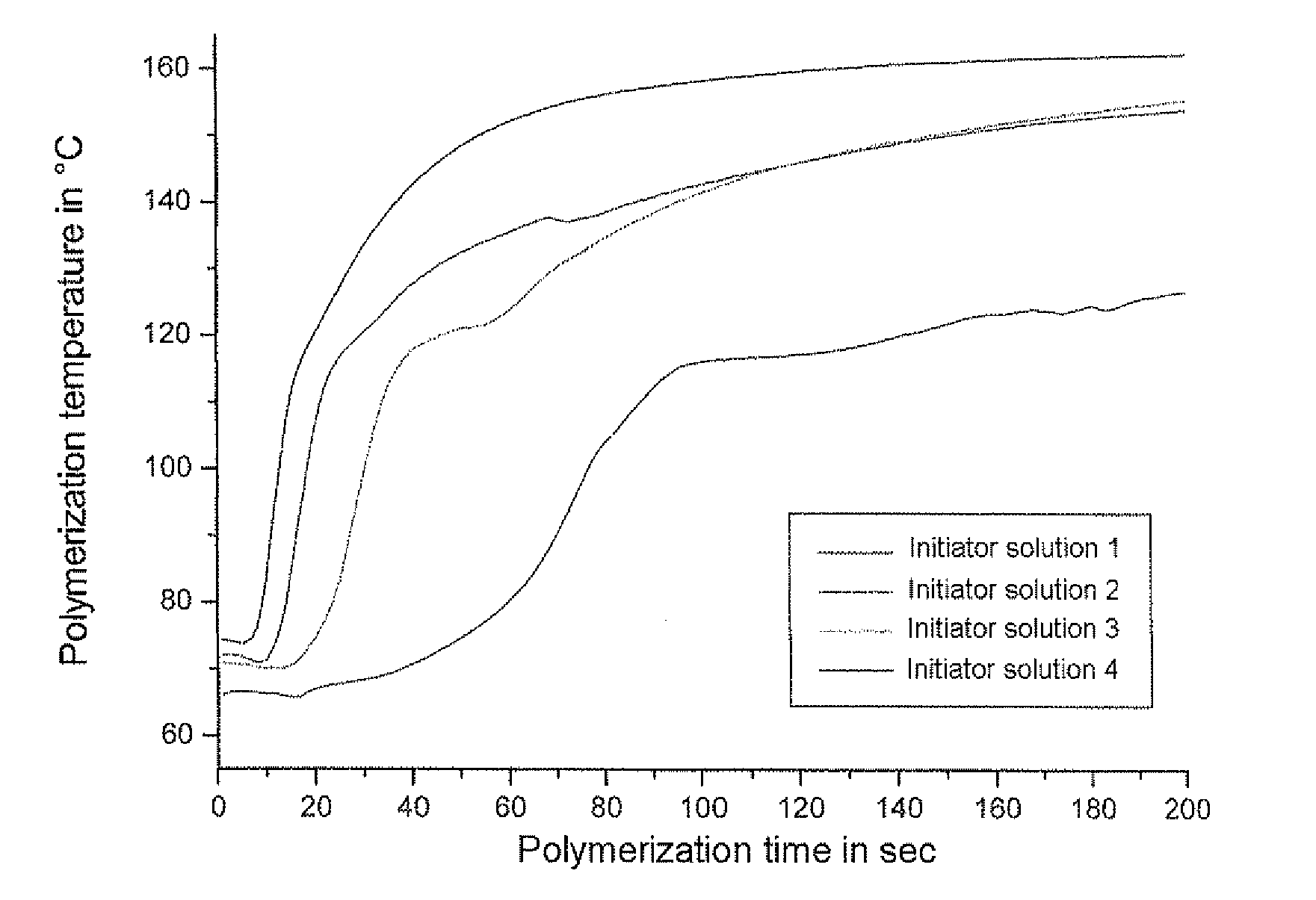Initiator
a technology of initiator and catalyst, which is applied in the direction of chemistry apparatus and processes, and other chemical processes, can solve the problems of boron trifluoride, difficult to handle, and fluctuation of pressure in the polymerization reactor
- Summary
- Abstract
- Description
- Claims
- Application Information
AI Technical Summary
Benefits of technology
Problems solved by technology
Method used
Image
Examples
example 1
Preparation of Initiator Solutions 1 to 4
[0036]Various amounts of triethylammonium triflate (“triflate”) as reported in table 1 are dissolved in a solution of trifluoromethanesulfonic acid (“triflic”) in methylal with stirring.
TABLE 1Initiator solution No.1234Triflic (mg)80808080Triflate (mg)0135270540Methylal (kg)1111
examples 2-5
[0037]In four different experiments, 100 g of trioxane at a time are in each case admixed with 100 microliters of the initiator solutions (1-4) prepared in example 1 with stirring and thereby cationically polymerized. The temperature course of the reaction mixtures versus time is measured with a thermocouple and recorded. The measured curves are shown in FIG. 1. The initiator solution was added at time t=0 sec.
[0038]The induction time and the temperature rise rate dT / dt, which is proportional to the polymerization rate, can be read off from the curve. The results are shown in table 2:
TABLE 2Initiator solution No.Induction timeTemperature rise rate at 90° C.1 7 sec6.1° C. / sec214 sec4.8° C. / sec322 sec3.2° C. / sec453 sec1.4° C. / sec
[0039]It is clear from the operative examples carried out how an increasing retardation of the polymerization takes place with increasing ratio of salt to protic acid at the same protic acid concentration.
[0040]The melt indices of the polymers for examples 2-5...
PUM
| Property | Measurement | Unit |
|---|---|---|
| Temperature | aaaaa | aaaaa |
| Fraction | aaaaa | aaaaa |
| Fraction | aaaaa | aaaaa |
Abstract
Description
Claims
Application Information
 Login to View More
Login to View More - R&D
- Intellectual Property
- Life Sciences
- Materials
- Tech Scout
- Unparalleled Data Quality
- Higher Quality Content
- 60% Fewer Hallucinations
Browse by: Latest US Patents, China's latest patents, Technical Efficacy Thesaurus, Application Domain, Technology Topic, Popular Technical Reports.
© 2025 PatSnap. All rights reserved.Legal|Privacy policy|Modern Slavery Act Transparency Statement|Sitemap|About US| Contact US: help@patsnap.com



